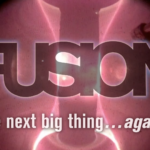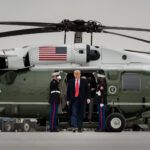After Chernobyl: The life of a nuclear expert
By Richard Wilson | April 26, 2011
On March 11, 2011, I was in a lunch meeting in Washington, DC, when I learned that an earthquake and tsunami had struck the Fukushima Daiichi nuclear plant. Initially I was optimistic that the plant’s operators would be able to handle the situation. But as the accident grew to a level 7 in seriousness over the following weeks, my thoughts turned to the only other comparable accident in history — and its lasting effects on my life.
On April 28, 1986, I was sitting at my desk when the phone rang. It was a New York Times reporter, calling to tell me that there had been a serious nuclear reactor accident two days earlier in the Soviet Union at a place called Chernobyl. The reactor was a water-cooled, graphite-moderated RBMK, and I was one of the few Americans who had a copy of a Soviet report describing this exact reactor in detail. For the next month I thought of little else but Chernobyl.
On the day of that call, there were some 386 nuclear reactors around the world; today there are 440. Although the number of reactors has not changed much in the past quarter-century, there have been major changes in how — and when — information about a nuclear catastrophe reaches the public.
In 1986, I already had some experience with the press. I had appeared on a television news program immediately after the 1979 Three Mile Island accident. Like many experts, I was appalled by the shoddy coverage of that accident: There were errors in every newspaper report I saw. Even before Three Mile Island, the Scientists Institute for Public Information — a group that helped journalists find reputable sources — asked me to be “on call” as one of their radiation experts. When news of Chernobyl broke, my phone began ringing.
April 29, 1986, 6 a.m. I awoke early on my 60th birthday to a press call from Australia. And, with this interview, I began a new chapter: making sense of life after a catastrophic nuclear accident.
10 a.m. I sent telexes to several Russian friends, offering my help. I urged them to impound all milk in the region around the reactor for three weeks, to prevent children from being exposed to radioactive iodine.
11:30 a.m. A television crew arrived at my office for an interview. Then I was off to Seabrook, New Hampshire, where a power company was holding a press conference to explain how their reactor was different from an RBMK.
2 p.m. Just as the press conference began, the power company received a phone call from Moscow. The New York Times correspondent in the Moscow bureau had been told that I knew what was going on at Chernobyl, and he had tracked me down. The press conference temporarily ground to a halt while I told the reporter what I knew about the RBMK reactor and the situation at Chernobyl.
6 p.m. I appeared on The MacNeil/Lehrer NewsHour, a television news program hosted by Robert MacNeil and Jim Lehrer. Earlier that day, United Press International had reported that the Chernobyl death toll “may have surpassed 2,000.” (The number was based on a report from a Kiev resident that was never confirmed, but it received wide play.) As I explained to the NewsHour hosts, there might be (and were) some people with large enough doses to get acute radiation poisoning — but they would not die instantly. Their innards destroyed, they would take a week to die. I emphasized the importance of impounding milk in the Chernobyl area, now that Swedish health physicists had found radioactive iodine in the atmosphere.
11 p.m. I finished my eventful day with a live appearance on the late news.
April 30, 1986. My friend Adnan Shihab-Eldin, a nuclear scientist who had just stepped down as director of the Kuwait Institute for Scientific Research, called. “When is the radioactive cloud going to come over Kuwait?” he asked. I told Adnan that the Lawrence Livermore National Laboratory air modeling experts predicted the cloud would arrive on May 2. “We will be ready for it,” he told me. Adnan and his doctoral student Ammenah Farhan later found small amounts of iodine in particulate form in the air. Theirs was the only measurement in the quadrant of the world located southeast of Chernobyl. I also heard from Sergei Kapitza, a physicist who hosted a popular Russian science television program. “Only two people have died,” he told me. Another 29 died later, as a direct result of the explosions and initial radiation release.
May 1, 1986. By now my life was a bit less hectic, but I was still receiving information about the Chernobyl plant from colleagues in Russia and Ukraine. Brave Ukrainian firemen had put out the fire on the roof within hours of the accident, but the graphite reactor core was a blazing cauldron. It continued to burn for days afterward, liberating additional radioactivity. The initial explosions a week earlier had sent radioactivity high into the air, where most of it blew westward over Poland and then veered northward over Scandinavia. Some particles rose even higher and caught an air current to China and eventually to the US. The plume of radioactivity from the graphite fire was much closer to the ground and did not travel as far. The vulnerable period for children’s thyroids began on April 26 and lasted about two weeks. The KGB, worried about mass panic, reportedly reprimanded a schoolteacher in Belarus and an army general in eastern Ukraine for advising people not to drink milk. But if the authorities had acted quickly, as British authorities did in 1957 after the Windscale accident, they might have spared 2,000 children from thyroid cancer caused by contaminated milk.
Assuaging fears. We in the United States could not help anyone overexposed to radiation, but we could try to understand it. The US press, some government officials, and even some US utilities were exaggerating the effects of the accident, claiming it could ultimately cause hundreds of thousands of cancers. I spent much of the month of May answering questions from worried individuals and organizations. One phone call quickly followed another, both at home and at Harvard. I took the phone off the hook at night to get some sleep.
Many of the calls came from ordinary Americans. Standing in my secretary’s office one day, I spent nearly an hour on the phone with a woman who had heard press reports about the bravery of the helicopter pilots dropping sand on the burning reactor and exposing themselves to radiation. The caller’s daughter would soon be flying to Brussels — hundreds of miles from Chernobyl and a month after the accident. “I am concerned about her flying through that radioactive cloud,” the caller said. “Please excuse me — I am just a concerned mother.” “There are several million mothers in the world,” I replied. My colleague, Nobel Laureate Ed Purcell passed the door as I was taking this long phone call and stopped to listen. He congratulated me on my patience, as others have since. I am not sure whether I assuaged the woman’s fears, but above all I wanted American thoughts and actions to be based on scientific truth rather than on vivid imagination.
By the end of May 1986, the phone calls had grown less frequent, and media attention shifted to the upcoming wedding of England’s Prince Andrew and Sarah Ferguson. I was able to get back to physics research some of the time, but Chernobyl still kept me busy for another year and a half. In August 1986 I went to an International Atomic Energy Agency (IAEA) meeting in Vienna to hear the official Soviet report on the accident. There I met two fine young Russian physicists, Vladimir Demin and Oleg Pavlowski, who had done calculations of the radioactivity released during the accident. We spent several hours comparing their calculations with the thousands of radiation measurements I carried in my briefcase.
Twenty-five years of change. I made my first of many trips to Chernobyl in February 1987, and returned in December of that year with a camera crew that was filming a documentary, “Back to Chernobyl,” for public television. During the first few years after the accident, I gave nearly 100 talks on Chernobyl, everything from colloquia in physics departments, to discussions at retirement homes.
The Fukushima incident is a reminder of how much things have changed since then. Today there is far more communication between American and foreign experts, and a much better understanding of cultural and political differences. In 1986, many of the “experts” quoted in the media had little knowledge of the Soviet Union.
Back then, both experts and the general public depended on the media for information about the accident. But in 2011, radiation measurements and other information about Fukushima are available on the Internet, where they are quickly translated into English. Unfortunately, much of this information is raw data unaccompanied by explanations of what it all means for public health and safety. And press reports on Fukushima too often quote people who are policy experts rather than scientists.
Were my efforts to educate the public about Chernobyl worth it? The work was intellectually rewarding, but a drain on my time and finances. I learned that one conversation with a reporter is not enough to make a difference in the world. A scientist who wants to engage the public must keep reaching out, correcting mistakes, and pointing reporters in the right direction — even though you never know exactly where they will go, or what approach will be most effective. You have to let the effort consume you.
Would I do it again? Absolutely. April 29 will be my 85th birthday, and I’ll probably spend part of the day commenting, again, on a nuclear disaster.
Together, we make the world safer.
The Bulletin elevates expert voices above the noise. But as an independent nonprofit organization, our operations depend on the support of readers like you. Help us continue to deliver quality journalism that holds leaders accountable. Your support of our work at any level is important. In return, we promise our coverage will be understandable, influential, vigilant, solution-oriented, and fair-minded. Together we can make a difference.
Topics: Nuclear Energy, Opinion















